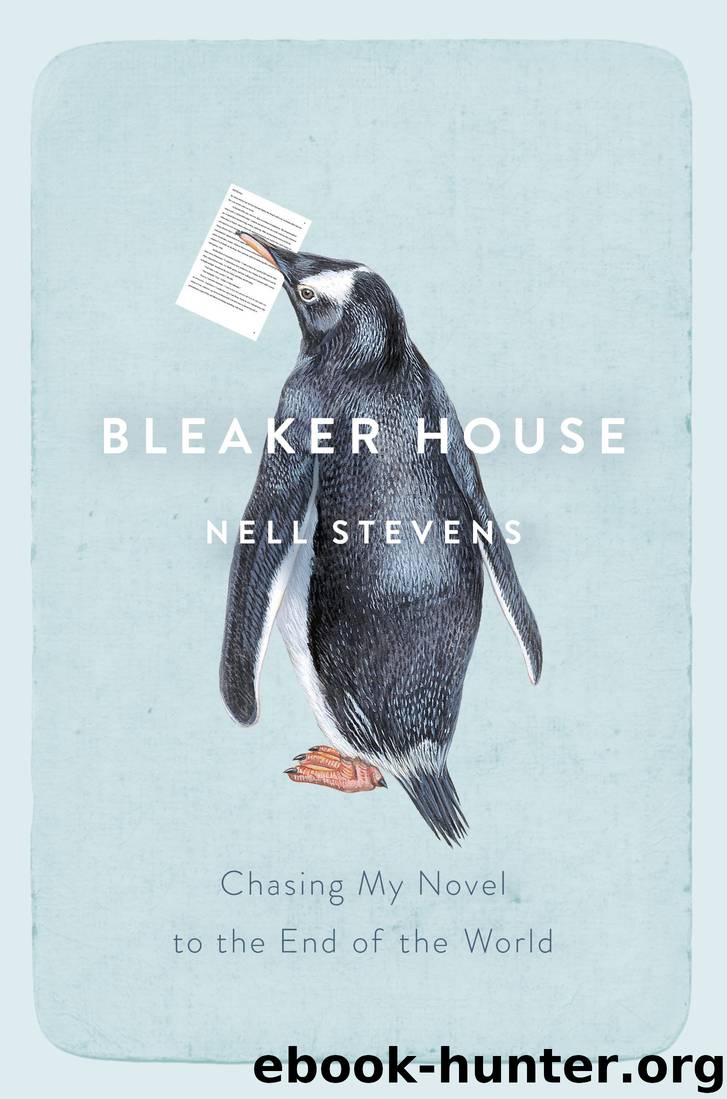Bleaker House by Nell Stevens

Author:Nell Stevens
Language: eng
Format: epub
Publisher: Knopf Doubleday Publishing Group
Published: 2017-03-13T16:00:00+00:00
Two, Not One
The room, which was strewn with papers and nearly filled by a great writing-table covered with similar litter, was, I must say, not only very untidy, but very dirty…But what principally struck us was a jaded, and unhealthy-looking, though by no means plain girl, at the writing-table, who sat biting the feather of her pen, and staring at us. I suppose nobody ever was in such a state of ink.
—ESTHER’S NARRATIVE, BLEAK HOUSE
Leslie Epstein is a man who teaches writing with rules. There are many, outlined in a document called “Tips for Writing and Life,” which he distributes annually to each incoming cohort of MFA students, and which is referred to thereafter as the “tip sheet.” The phrase “tip sheet” makes Leslie’s rules sound friendly, as though they are mere suggestions.
They are not mere suggestions. They are specific. “Have in mind between 68 and 73 percent of the ending before you begin. In narrative prose, as opposed to indented dialogue, write, on average, two-and-a-half paragraphs per page, never six or seven or ten. Avoid large abstract nouns, particularly those ending in ‘ness.’ Limit your similes to two a page. Do not write satire.”
Leslie’s students learn, over the course of their apprenticeship, that these rules are both tongue-in-cheek and very serious. You will be castigated for using the word “happiness,” for disrespecting your own characters, for spelling “all right” as one word, for paragraphs that are too long, for ellipses…
You also learn that one of the things Leslie loves above all is a story that breaks his rules and still somehow “works.” These are rare.
One of Leslie’s tips, which I think about a lot on the island, is “Two, not one.” By this he means that the interest of a story lies in the interaction between two characters. A narrative that stays in the interior thoughts of a single character alone is more likely to fall flat and lose the interest of the reader. You need two—you need at least two. A more familiar way of putting this, a staple tenet of the creative writing workshop, is the assertion that narrative, or drama, requires conflict.
I have put myself in a situation that is, on paper, one, not two. My conflicts are predominantly internal: with moods, and memories, and, worst of all, dreams. When I send Leslie an excerpt from my novel, in which Ollie arrives on the island at night, loses his way and contemplates his own death, the response that bounces back into my inbox almost at once confirms my anxieties on this point: “Well, Nell, when you go to an island with no one on it, it’s not surprising that you write a Onesey instead of a—recommended—Twosey.”
—
Apart from the Royal Canadian Air Force Exercise Plan, I only have two books with me in paper form. The first is David Shields’s Reality Hunger, which I finished in one sitting on the plane from Santiago and which lies at the bottom of my case for the entirety of my Falklands stay.
Download
This site does not store any files on its server. We only index and link to content provided by other sites. Please contact the content providers to delete copyright contents if any and email us, we'll remove relevant links or contents immediately.
We're Going to Need More Wine by Gabrielle Union(18997)
Pimp by Iceberg Slim(14433)
Bombshells: Glamour Girls of a Lifetime by Sullivan Steve(14019)
The Radium Girls by Kate Moore(11964)
Becoming by Michelle Obama(9971)
Educated by Tara Westover(7994)
The Girl Without a Voice by Casey Watson(7842)
Wiseguy by Nicholas Pileggi(5704)
The Wind in My Hair by Masih Alinejad(5055)
Hitman by Howie Carr(5040)
The Rules Do Not Apply by Ariel Levy(4906)
Hunger by Roxane Gay(4893)
On the Front Line with the Women Who Fight Back by Stacey Dooley(4837)
Year of Yes by Shonda Rhimes(4722)
The Borden Murders by Sarah Miller(4270)
Papillon (English) by Henri Charrière(4223)
Joan of Arc by Mary Gordon(4049)
American Kingpin by Nick Bilton(3810)
Patti Smith by Just Kids(3747)
